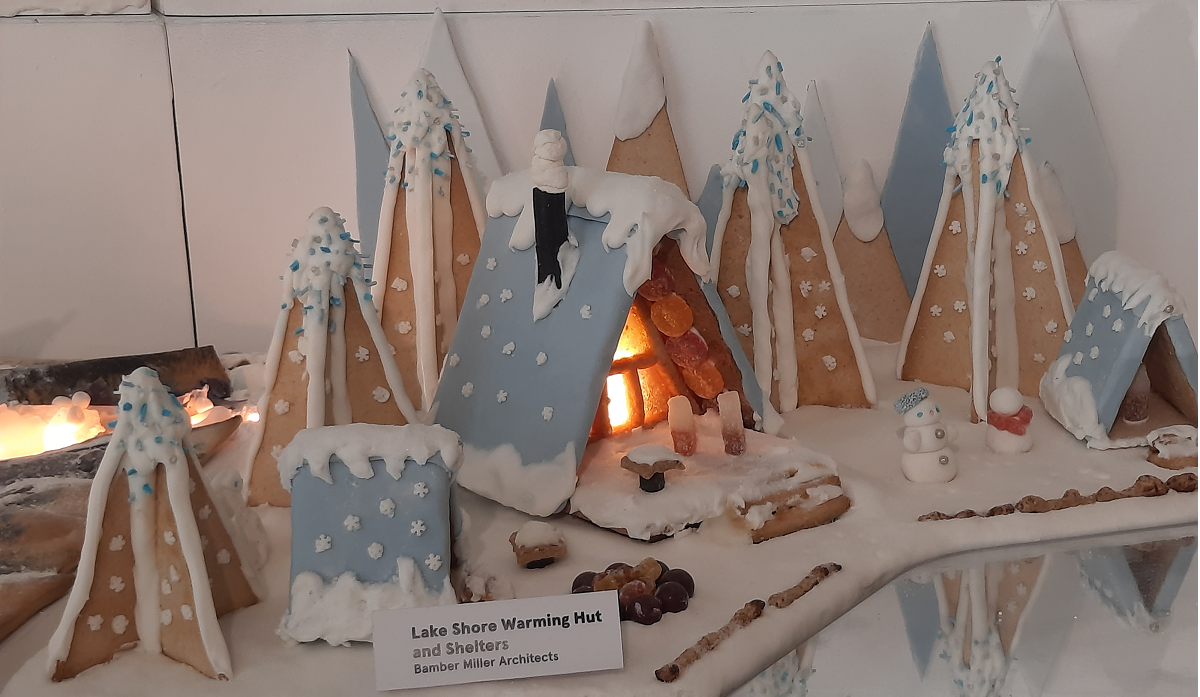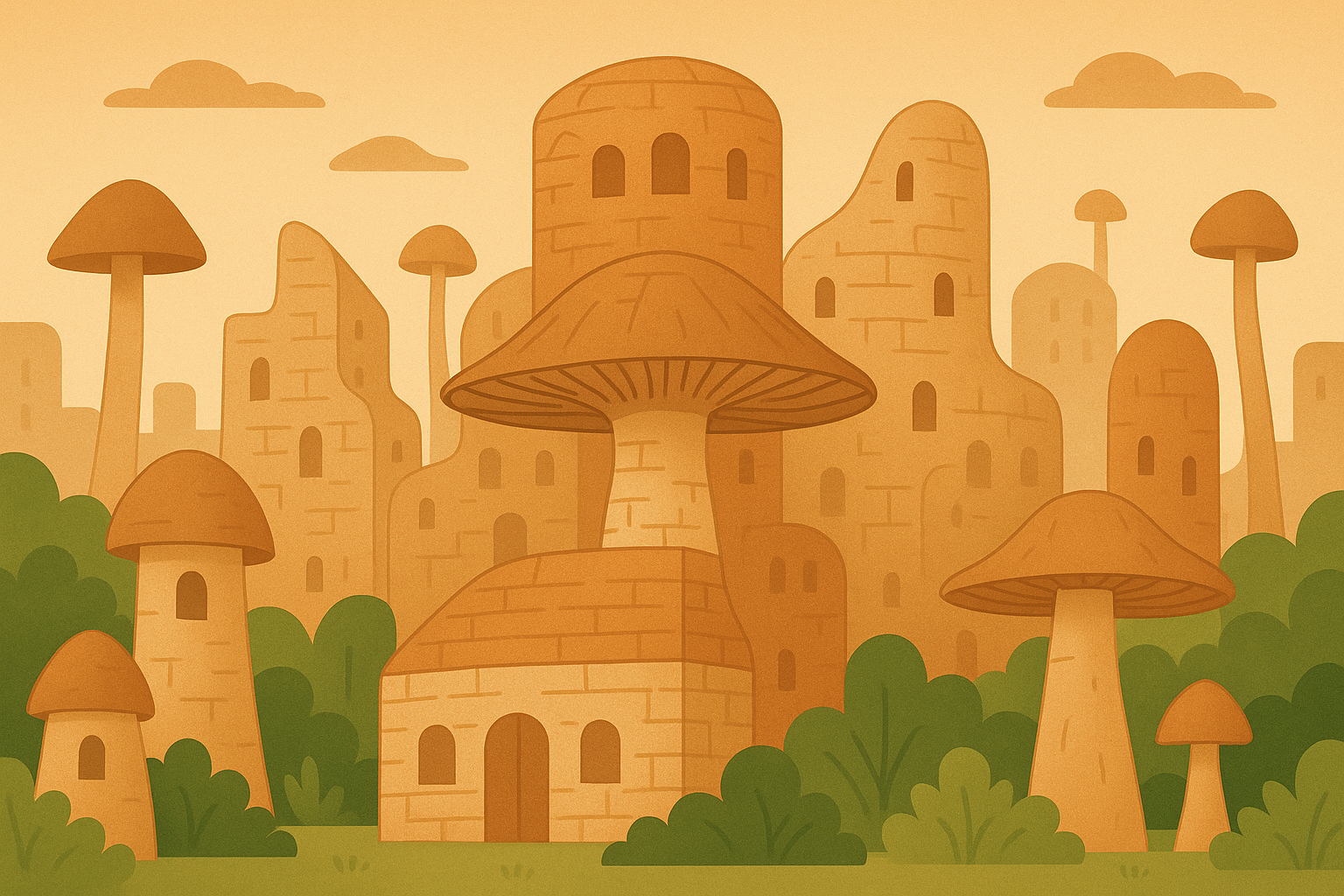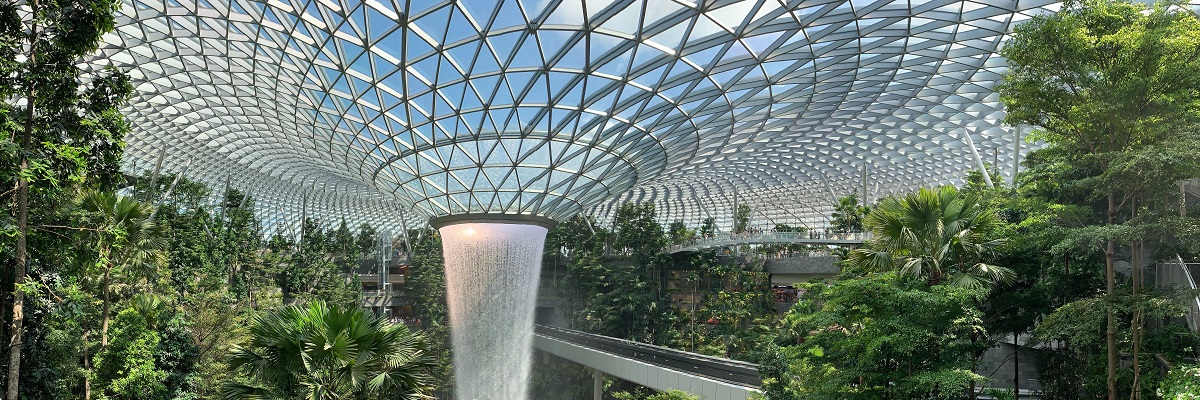In December 2022, I visited a slightly unusual architecture exhibition: The Gingerbread City by the Museum of Architecture in London. This UK-based charity wants to find new ways for the public to engage with architecture, and by using gingerbread houses rather than standard architectural models, they have definitely succeeded!
Now in its sixth year, Gingerbread City asks people to think about the way we create the places we live, work, and play in. The 2022 exhibition focuses on five different climate zones and innovative building solutions for each of them, designed by big names like Norman Foster and Partners, Zaha Hadid, House of Kin, PLP Architects, SPPARC, and Arup.
The exhibition is small, but incredibly detailed. You can easily spend 45 minutes looking at all the tiny houses and structures. While none of them exist in real life, they are great suggestions that will hopefully be implemented in a similar version in many cities.
There is also a fun activity that allows you to vote for your favourite building in each climate zone. Here are mine:
Continental
The continental climate is a climate of extremes with baking hot summers and icy cold winters. Therefore, the city and its residents must be ready for heatwaves and blizzards. Buildings must be robust to weather all kinds of different conditions.
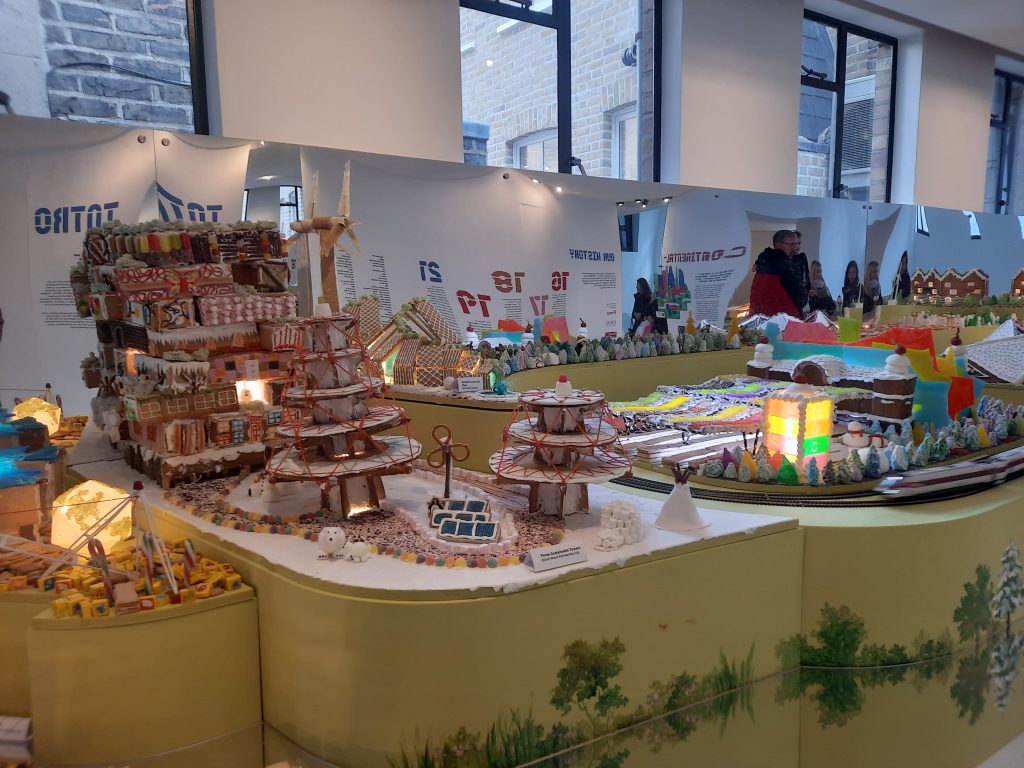
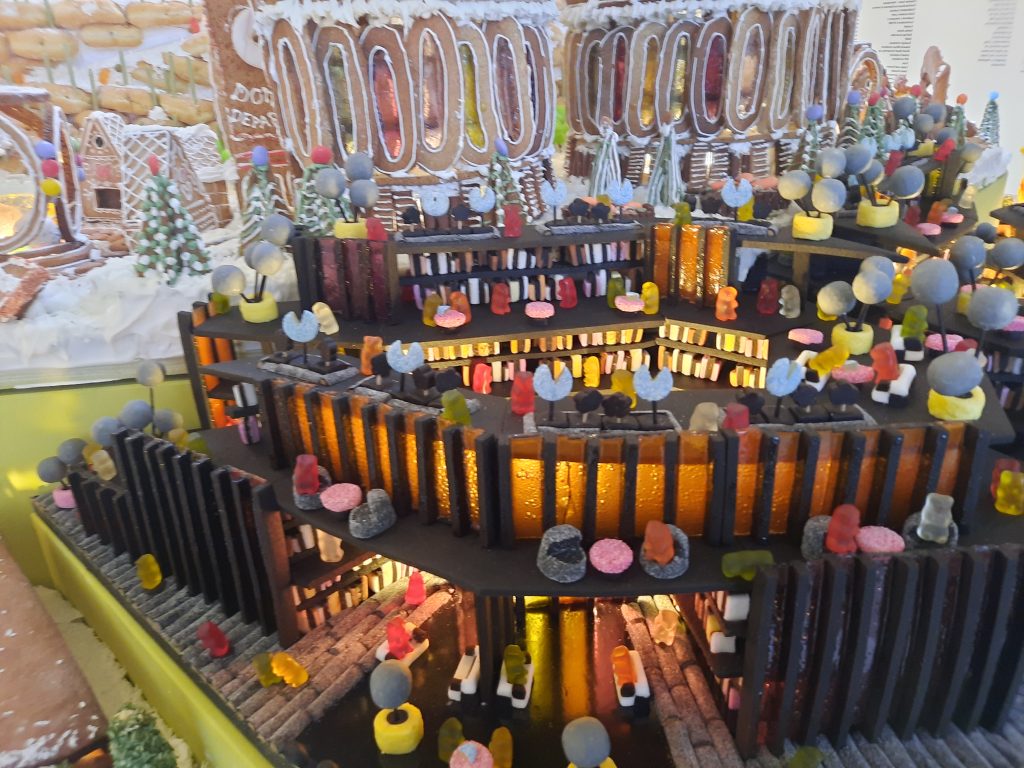
The Liquorice Library, a library and waterside café by UHA London, is a “warm haven for relaxation, reflection, and conversation”. Visitors can explore the labyrinths and breakout spaces. the library is designed for community and a mix of different uses. The glulam beans used in this design have a low-carbon footprint and materials are locally sourced, showing how future-proof building consist of low upfront carbon.
Temperate
The temperate climate, which is typical for London, consists of cool and wet winters and warm summers. The Gingerbread City planners have factored in the rain. While climatic extremes are less severe, each season brings a broad range of conditions that need to be taken into account.
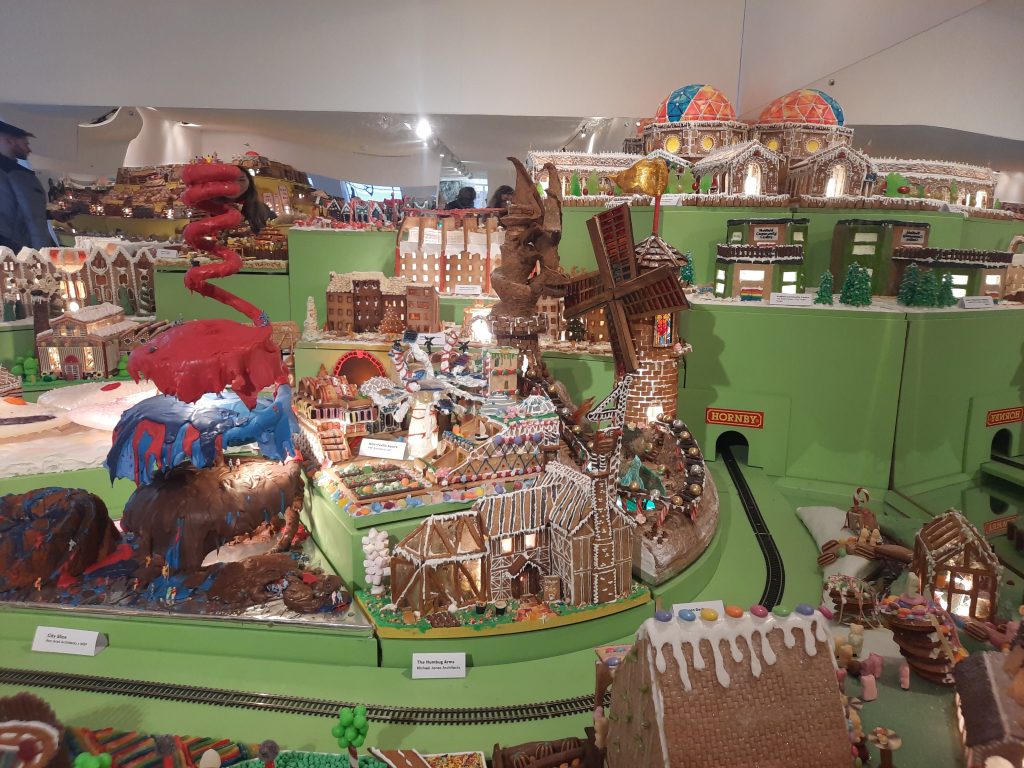
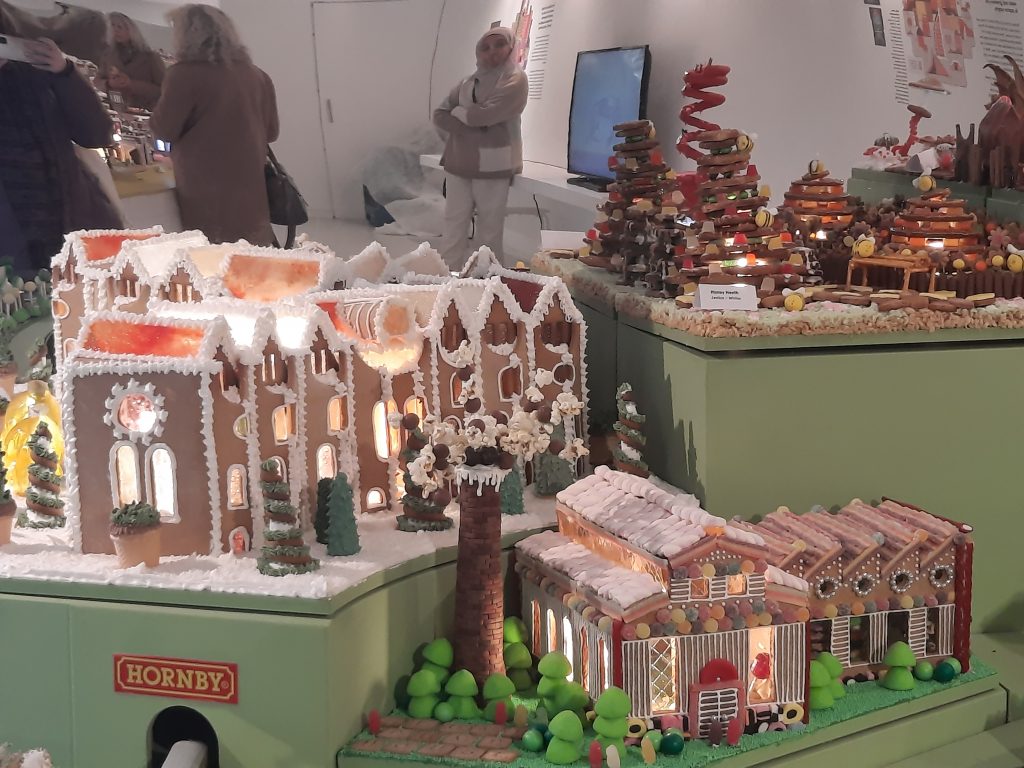
My favourite piece in this climate zone is Honey Heath, a bee park by Jestico+Whiles. This city park has multiple types of landscape and engages with people within the city, while also helping the bee population. The number of bees in the UK has severely dropped in recent years, but since they pollinate one third of crops worldwide, they are a vital part of ecosystems. In the forest, meadow, and walled garden of Honey Heath, new habitats are available.
Desert
In the dry zone, water and greenery are scarce. The sun’s heat is a stress factor, but also a source of energy. Its libght has to be shaded and filtered. To build thriving communities for people, animals, and plants, water is essential.

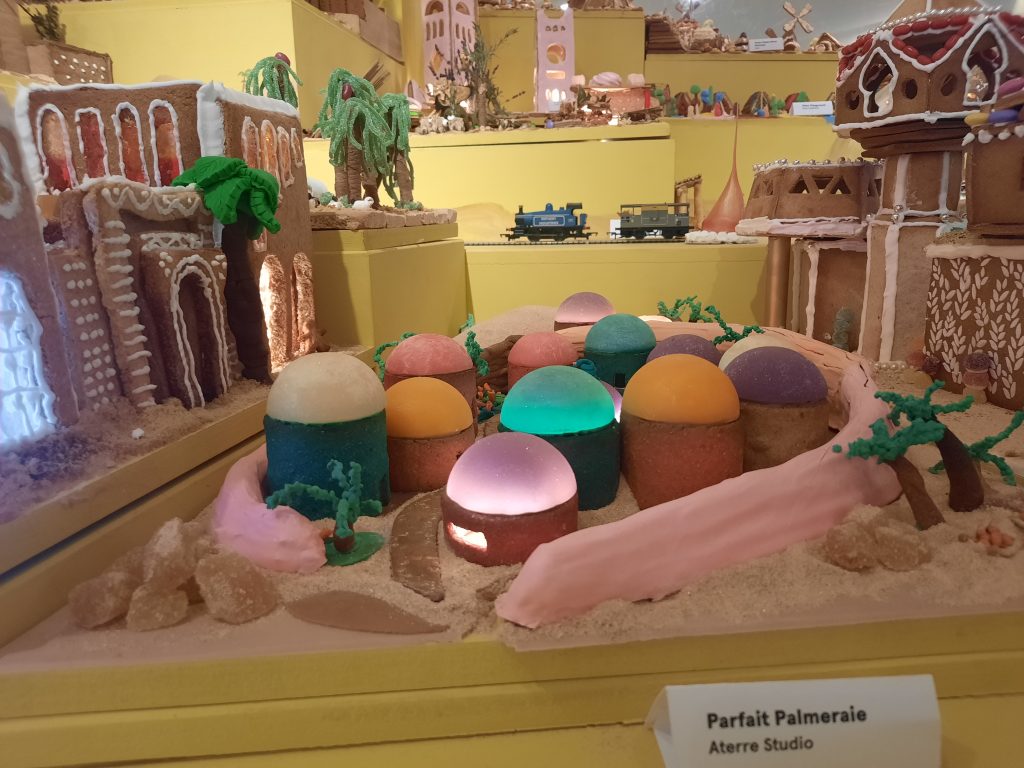
Parfait Palmeraie by Aterere Studio is an eco community of candy-coloured superadobe domes. This oasis in the desert follows the traditional design of a kasbah and has an abundant palm grove oasis within its fortified walls. Desert permaculture techniques allow for the recycling of grey water to feed the palm trees, vegetable gardens, and pond. The water is then filtered and recycled for ongoing use. Night dew provides additional water. Traditional knowledge combined with modern technology result in a sustainable, low-impact satellite community in the desert.
Tropical
The lush, colourful tropical zone has many rainforests and tropical beaches. Cities are warm and humid. It is important to keep interiors cool by adding open space, windows, and air flow. Buildings face away from the midday sun.
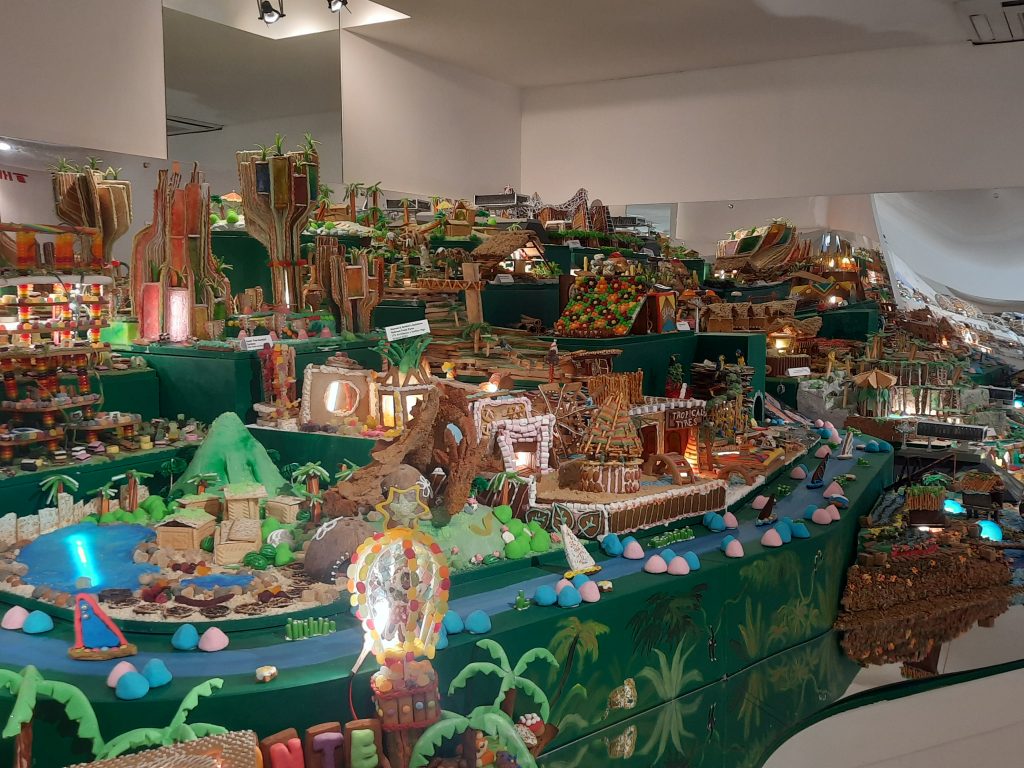
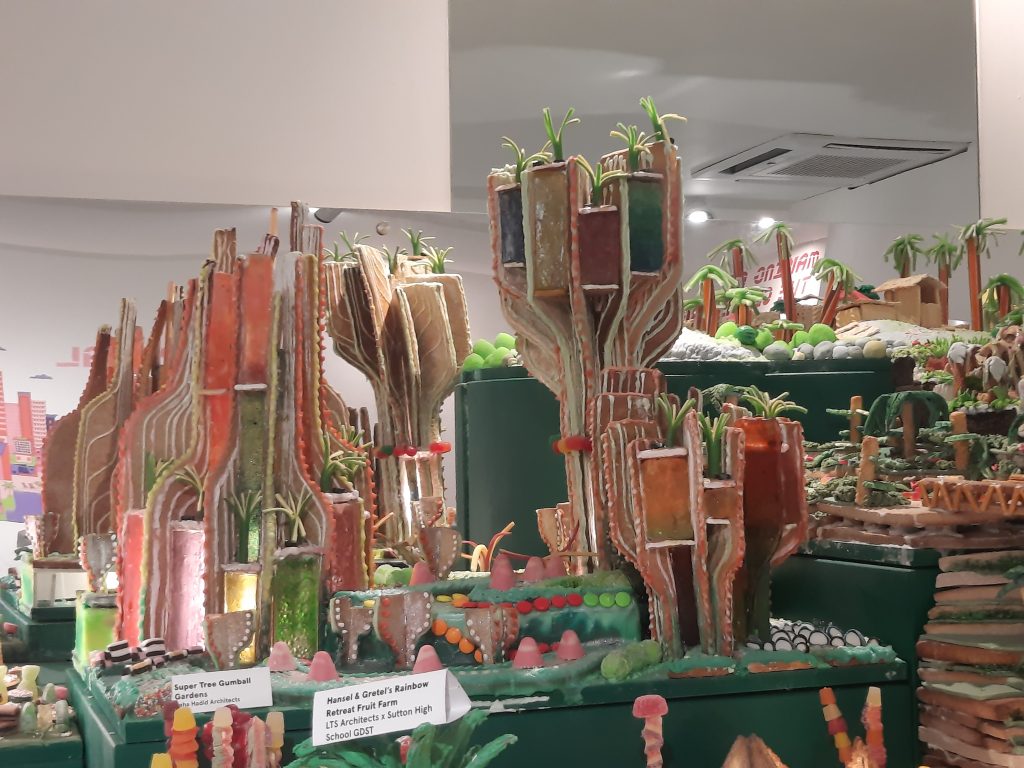
My favourite gingerbread construction here was Super Tree Gumball Gardens by Zaha Hadid Architects, a complex of vertical gardens. The architectural practice is known for using advanced computational design methods to create new architecture. This four-dimensional tropical garden is an ecosystem with green undulating terraces, vertical flower gardens, and public spaces.
Polar
The polar zone is particularly challenging for architects due to low temperatures, snow and ice, and little to no daylight for many months of the year. The community is strong but sparse. Citizens need spaces to gather and celebrate their culture. Sturdy materials are key to reduce deterioration and to keep heat in buildings.

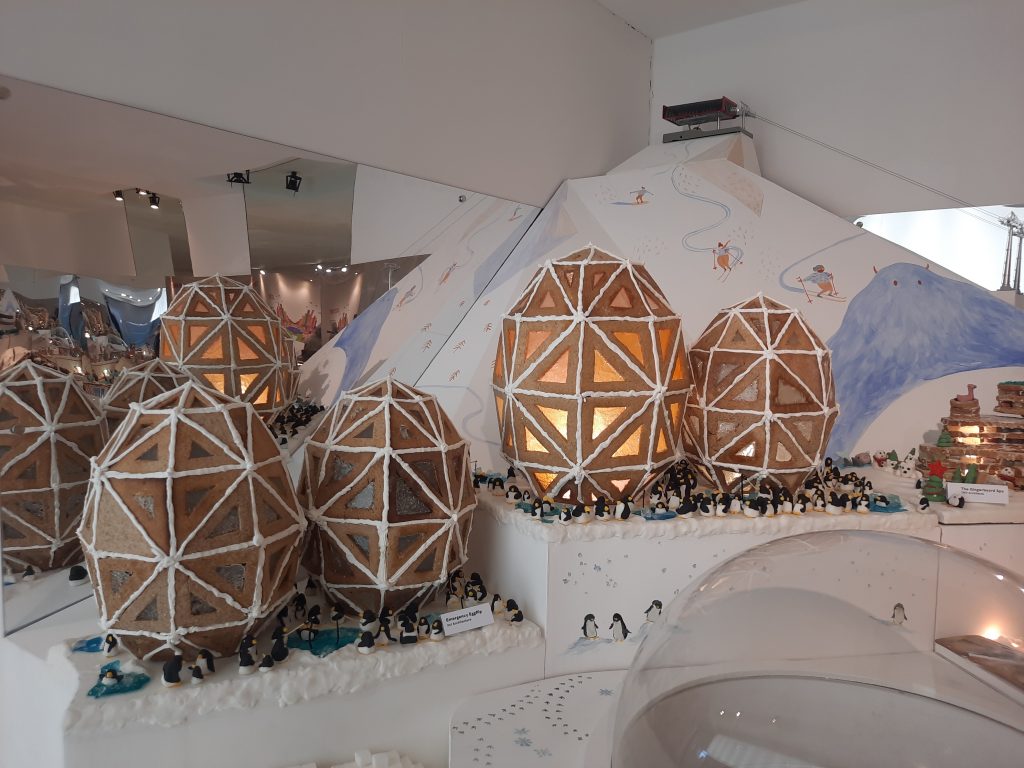
Emergency Eggflip is an arctic frosting research station by hcl Architects. It consists of a huddle of research pods that, according to the architects, “will collect climate change, ice movement data, and be carbon positive.” The eggs provide beautiful views and bring awareness to the research needed to preserve this climatic zone. They sit on skis and thus have a flexible nature. In one of the pods, there is an international expo developed in collaboration with local communities.
Have a look at the virtual Gingerbread City exhibition here and vote for your favourite: https://museumofarchitecture.org/thegingerbreadcity2022/!

